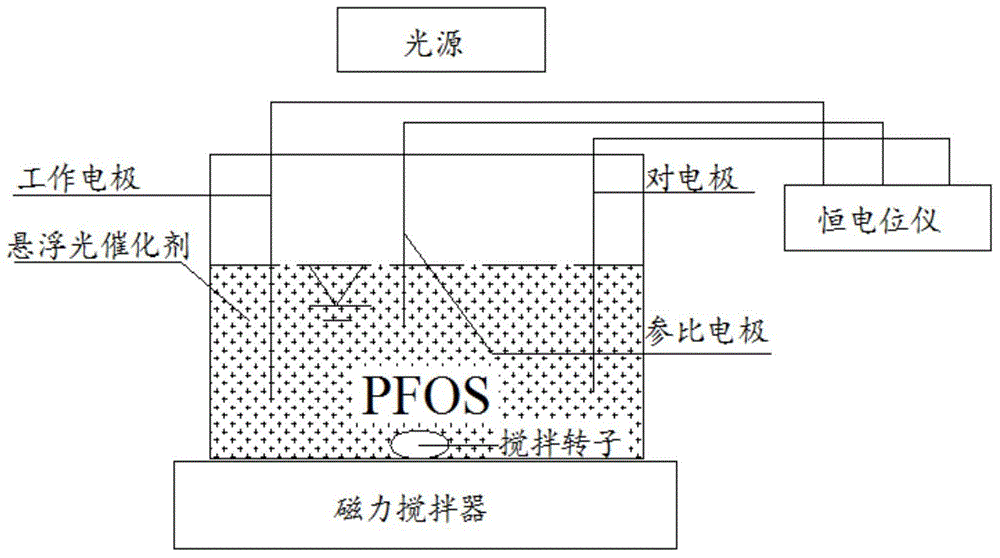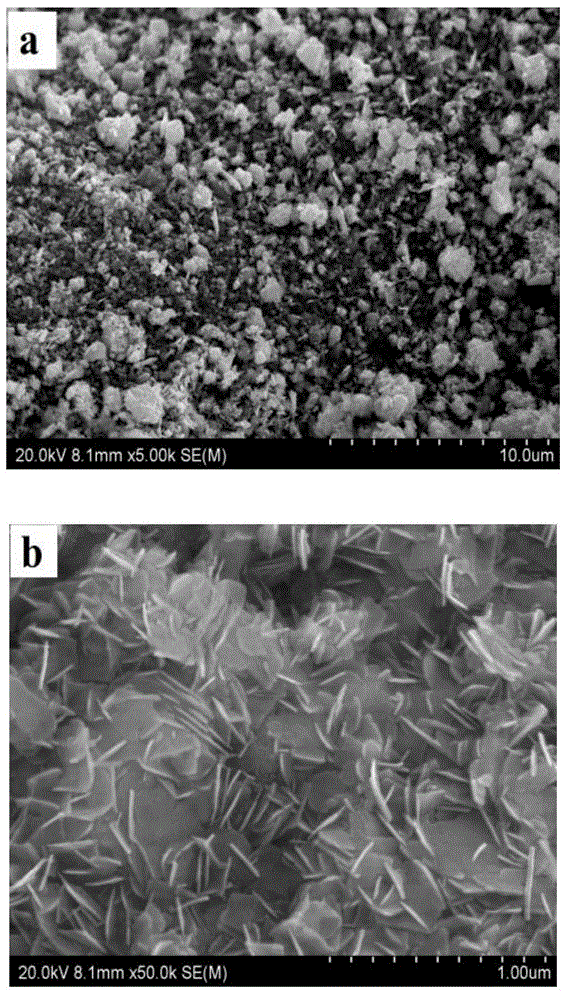Method for performing combined catalytic degradation on perfluorooctane sulfonate in water by using visible light-electricity
A technology for catalytic degradation of perfluorooctane sulfonic acid, applied in chemical instruments and methods, electrochemical water/sewage treatment, light water/sewage treatment, etc., can solve problems such as limiting photocatalytic degradation efficiency, and achieve low energy consumption , low current density, simple operation
- Summary
- Abstract
- Description
- Claims
- Application Information
AI Technical Summary
Problems solved by technology
Method used
Image
Examples
Embodiment 1
[0034] Use the electrochemical workstation to control the current density of the reaction. In the constant current mode, select the current density to be 0.25mA / cm 2 The reaction experiment was carried out, the reaction time was 120min, the distance between the plates was 20mm, and the electrolyte was 10mmol L -1 NaClO 4 .
Embodiment 2
[0036] Use the electrochemical workstation to control the current density of the reaction. In the constant current mode, select the current density to be 0.5mA / cm 2 The reaction experiment was carried out, the reaction time was 120min, the distance between the plates was 20mm, and the electrolyte was 10mmol L -1 NaClO 4 .
Embodiment 3
[0038] Use the electrochemical workstation to control the current density of the reaction. In the constant current mode, select the current density to be 1.0mA / cm 2 The reaction experiment was carried out, the reaction time was 120min, the distance between the plates was 20mm, and the electrolyte was 10mmol L -1 NaClO 4 .
PUM
 Login to View More
Login to View More Abstract
Description
Claims
Application Information
 Login to View More
Login to View More - R&D
- Intellectual Property
- Life Sciences
- Materials
- Tech Scout
- Unparalleled Data Quality
- Higher Quality Content
- 60% Fewer Hallucinations
Browse by: Latest US Patents, China's latest patents, Technical Efficacy Thesaurus, Application Domain, Technology Topic, Popular Technical Reports.
© 2025 PatSnap. All rights reserved.Legal|Privacy policy|Modern Slavery Act Transparency Statement|Sitemap|About US| Contact US: help@patsnap.com



